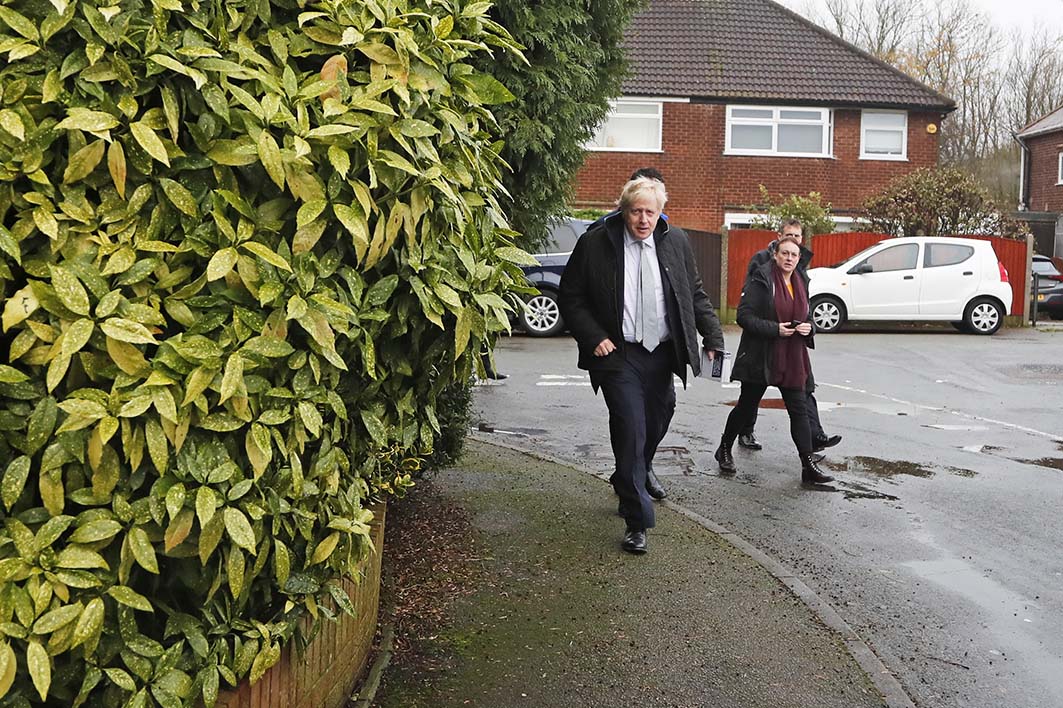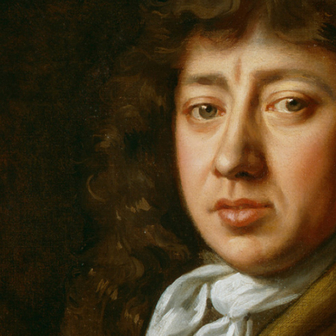Does more voting mean better democracy? If so, Britain would be well on track. The general election on 12 December is its fourth since 2010. The same period has seen four other pan-UK votes: referendums on electoral reform and Brexit, and two elections to the European parliament. There have also been two elections each to assemblies in London, Scotland and Wales, and three to Northern Ireland’s. A third referendum, on Scotland’s independence, was a UK event even if a Scotland-only decision. Around forty mayoral posts in English city-regions or local authority areas (including London’s high-profile mayor and assembly) were contested, and a similar number of police-and-crime commissioner, or PCC, roles across England and Wales. Council and borough elections continued to come around. These days it’s wise — just in case — to sift junk mail for a polling card.
This electoral amalgam was seeded by New Labour’s devolution reforms of the late 1990s. Not everything came to fruition: a regional plebiscite said no to an assembly in England’s northeast, thanks to the feisty Dominic Cummings (now a Downing Street aide), thus quashing plans for a sequel in the northwest. In several cities, people rejected offers of a mayor; in others, they chose one after the model had been decreed. These signs were, or should have been, an early warning that hustlers of engagement can induce apathy or disillusion.
Tony Blair and Gordon Brown, and David Cameron after 2010, framed their institutional bustle as a refit of British democracy. But the jargon used to finesse new outfits and voting channels — citizenship, access, participation, empowerment, civil society, progressive, accountability, closing the people–power gap, devolution and engagement — helped disguise their often top-down impulse.
Perhaps inevitably, rhetoric outran delivery. More seriously, mushrooming elections coincided with democracy’s growing deficits of performance and trust. From 2004, a host of studies measured citizens’ alienation from their rulers and core institutions, citing the Iraq war, the global financial crisis, austerity, MPs’ misconduct, and business greed as key factors. A Pew survey in 2019 records 70 per cent of people disputing the notion that elected officials care what they think. Democratic Audit’s 2018 report shows “unprecedented declines in the core institutions of the UK’s democratic system, particularly at the centre.” The Hansard Society’s 2019 audit of political engagement finds public views of Britain’s governing order bleaker than any in its fifteen-year history: as many (or perhaps as few) as 63 per cent of respondents think the system is rigged to the advantage of the rich and powerful, and 72 per cent say it needs big improvement.
This democratic recession permeated the 2016 vote on European Union membership and its ensuing, endless limbo. Brexit, as both political logjam and immense psychic weight, is now well into its fourth year. The whole experience deepens the slump. (True, the recurring contrarian argument that Britain’s system is gamely coping has merit, but is fixated on process.) The Hansard study says 73 per cent have little or no confidence in MPs’ handling of Brexit, with 42 per cent even agreeing that “many of the country’s problems could be dealt with more effectively if the government didn’t have to worry so much about votes in parliament.”
Such decay — David Van Reybrouck calls it “democratic fatigue syndrome” in Against Elections: The Case for Democracy — seems all the more corrosive in light of the surge in voting channels preceding and running alongside it. Britain’s recent history, its lowest point the non-enactment of the 2016 decision, suggests the link between voting and democracy is indeed broken: that ever more injections have enabled immunity. If that is so, the latest general election will be just another Thursday, leading to yet more delay and obfuscation.
But could the link yet be restored? At heart this election sets Boris Johnson’s attempt to uphold the EU referendum verdict against parties seeking to reverse or cancel it. Brexit thus remains the raw power struggle it became under Theresa May’s wretched premiership, eventually driving the new Conservative leader to Downing Street on 24 July with a pledge to “get Brexit done.” Losing, over three volcanic months, a tiny House of Commons majority, a tranche of Tory defectors or expellees, a series of votes, control of the daily agenda, and a Supreme Court ruling on his proroguing of parliament, he earned a lifeline by signing a revised agreement with the European Union. Still confined by brute Westminster numbers, unable to secure his preferred “deal-then-election” tango, escape came via a Liberal Democrat–Scottish National Party démarche: by 24 October, this “election-then-what?!” was on.
Its early phase echoes Brexit’s years of frenzied torpor. There’s no uplift yet from the parties’ combat over health spending, floods and broadband, nor from a hyped-up and numbing TV debate on 19 November between Johnson and Labour’s Jeremy Corbyn. But if this election is to be different, then a brief look at what people actually turned out to vote for (or, notably, didn’t) during Britain’s two-decade voting boom might yield a countervailing glimmer.
Turnout statistics are the enduring Cinderella of Britain’s election reporting. Hugh Brogan, respected historian of the United States, would periodically write to the Guardian lamenting their absence among its acres of comment. In a country where voting is voluntary, the neglect gives politicians a free pass and skews understanding of the salience of politics in people’s lives.
A portion of such figures from these years, albeit lacking the granular detail they deserve, is sobering illustration. Turnouts in Wales’s assembly and Scotland’s parliament have, in four later elections, never matched their inaugural 46 and 59.1 per cent in 1999. Indeed, it’s worth recalling that the 1997 referendums on whether to create these bodies drew just 50.1 per cent of voters in Wales, of whom 50.3 per cent said yes, and 60.1 per cent in Scotland, of whom 74.3 per cent said yes to the principle and 63.5 to the institution having tax-varying powers. (The pro-independence SNP, in power in Edinburgh since 2007, ever presumes to speak on behalf of — in effect to own — Scotland, but has never won the votes of even 37 per cent of the country’s electorate in any election.)
A 2011 referendum on extending the Welsh assembly’s powers drew 35.6 per cent. In two PCC cycles, a turnout rise from 15.1 to 27.3 per cent was “clearly influenced by combining the PCC contests with other elections,” while much-heralded 2017 metro mayor elections in the greater Manchester and Liverpool areas lured 28.9 and 26.1 per cent to the polls. This year’s council elections in England had 32.6 per cent, within the usual range and shared by five mayoral run-offs on the same day.
Northern Ireland, in the UK’s variegated realm of (at least) four nations, is particular in its own way. Belfast’s assembly too has never reached the heights of 69.8 per cent in the first, 1998, election, but a domestic scandal and Brexit’s strains helped catapult turnout in a snap 2017 poll to 64.8 per cent, a ten-point increase over a year. That said, the body is in a three-year limbo due to the stranglehold of hegemonic ethno-religious parties without whose agreement no executive can form.
In eight European parliament elections since 1979, the peak UK vote was 38.5 per cent in 2004; this year’s tally was 37.2 per cent, an increase of 1.6 per cent from 2014. Even amid Brexit’s morass, most Brits can’t be induced to rate Brussels and Strasbourg’s torpid palaces.
By the same token, the higher the stakes are perceived to be, the more voters join. Scotland’s 2014 referendum had an 84.6 per cent turnout, over twice the 42.2 per cent in the UK’s 2011 poll on ditching first-past-the-post for the alternative vote in electing the Commons. Only the tight general elections of 1950–51 (turnouts 83.9 and 82.6 per cent), the Churchill–Attlee era’s last hurrah, come near. And the UK’s 2016 vote on EU membership, at 72.2 per cent well exceeding the 63.1 per cent average of the four general elections between 2001 and 2015, in turn echoed the 71–78 per cent range of the twelve held from 1955 to 1997. To a degree, the popular investment in both events was a throwback to the long post-1945 era.
These votes by turn shook and toppled pillars of UK statehood: 44.7 per cent of those cast in Scotland in 2014 were pro-independence, 51.9 per cent of UK ones in 2016 pro-Brexit (including 38 per cent in Scotland). Although the first was a near miss — and establishment panic on the eve was palpable — both results incorporated a verdict on those wider failings of governance: this time communicated not by mass apathy but by mass involvement. Against the feeble post-1997 institutional mishmash, with its slow draining of initial modest enthusiasm (where that existed at all), the big-issue referendums stand as acts of great democratic affirmation.
That’s not all they were, of course. Their disfiguring by vicious abuse, most of it online and perpetrated in the name of strident nationalism, reached a nadir in the murder, a week before the EU vote, of Labour MP Jo Cox by a neo-Nazi shouting “Britain first!” This inherent ambiguity will forever haunt them. Neither should it eclipse their infusion of therapeutic, if abrasive, vigour into a lethargic body politic where leaders’ promise of renewal had long gone sour.
Here is that glimmer. If the outcome of this general election allows the UK’s withdrawal from the European Union by 31 January, the fourth such deadline, the 2016 vote will at last be honoured and the link to democracy — in this vital instance at least — restored. The psychological impact will be multilayered and profound.
But an open-ended election, at a time of exceptional volatility in British party politics, holds no guarantees. For one thing, keen regional contests allied to unprecedentedly fluid party loyalties make the Commons patchwork hard to forecast. For another, the main anti-Johnson forces have two arguments with strong partisan appeal: Labour’s, that the Brexit obsession of a trio of Conservative PMs since 2010 has relegated a mounting pile of economic and social problems, which must now be the priority; the LibDems’, that Brexit is a disaster which must be stopped. For yet another, Nigel Farage’s Brexit Party, even after half its candidates were stood down or withdrew, may thwart Tory gains in crucial target seats.
Were Labour to recreate its 2017 momentum, Jo Swinson’s LibDems further advance, and Nicola Sturgeon’s SNP restore its 2015-style dominance north of the border, the arising anti-Johnson majority would likely assent to a Corbyn premiership (though not a coalition). Yet bar ousting Johnson, nothing else unites these parties. On Brexit, unavoidably urgent after the election, Labour plans quick negotiation of close alignment with Brussels, then a vote between its deal and staying in the EU. The SNP, trumpeting Scotland’s pro-EU credentials, is pressing Labour to concede a second independence vote in 2020. The LibDems, having attracted pro-EU Tory and Labour dissidents to the fold, would simply revoke the UK’s choice to leave. Keeping any pantomime horse upright will be testing.
A pitch of clarity against opposition muddle may be Johnson’s ace in clinching a seasonal coup, ending Brexit’s deadlock and lifting its mental weight. Once the Commons pushes through the redone EU deal, the UK will wave farewell to Brussels, and hello to knotty trade talks, within weeks. At last, the end of the beginning, then down to work. But if not? More ruling the void, and the prospect of Brexit endless. •




